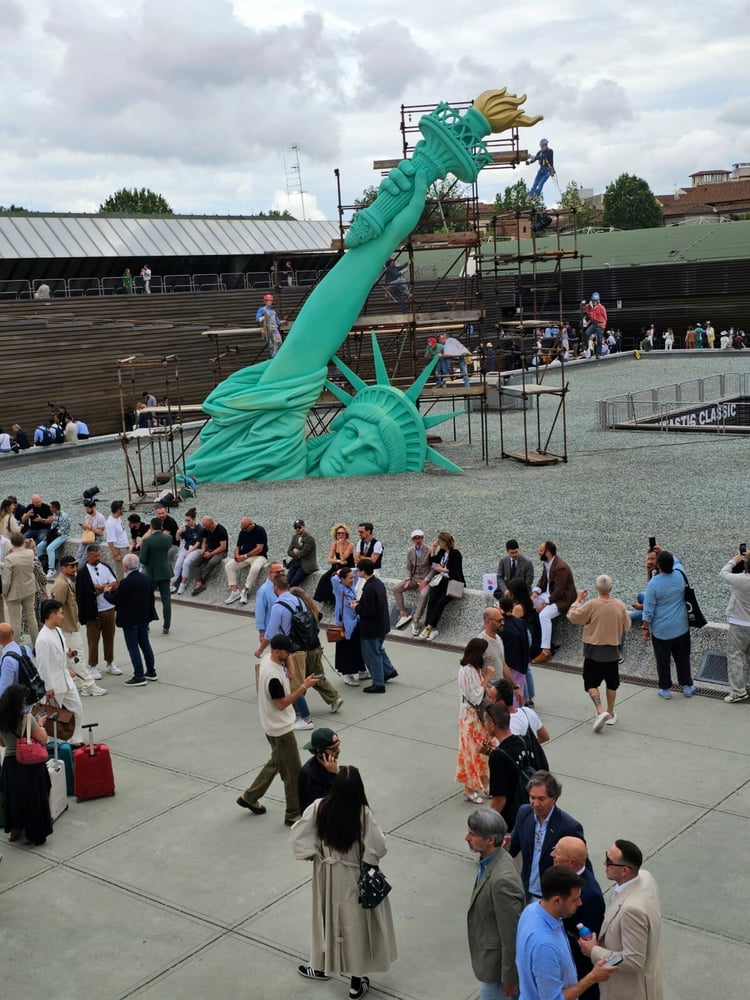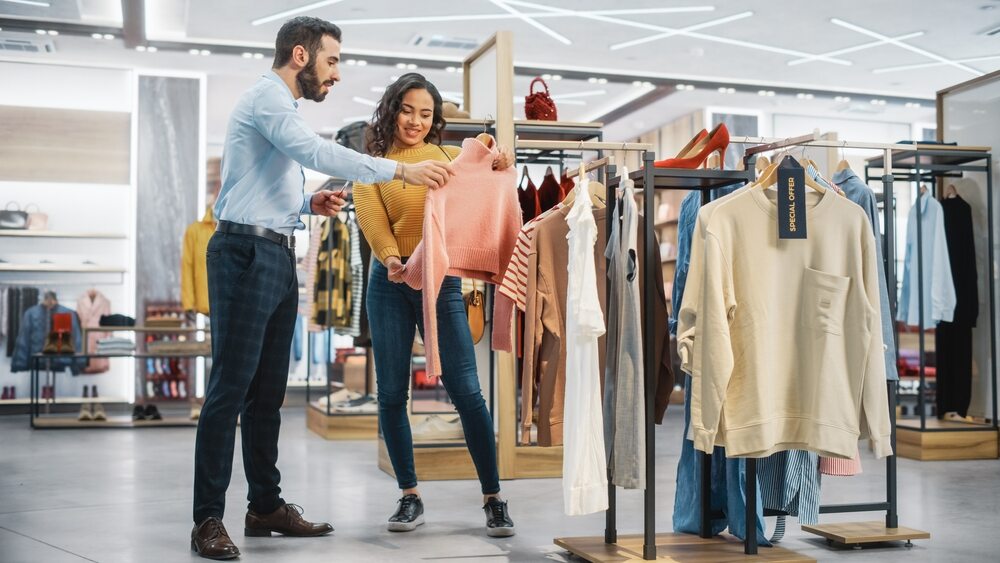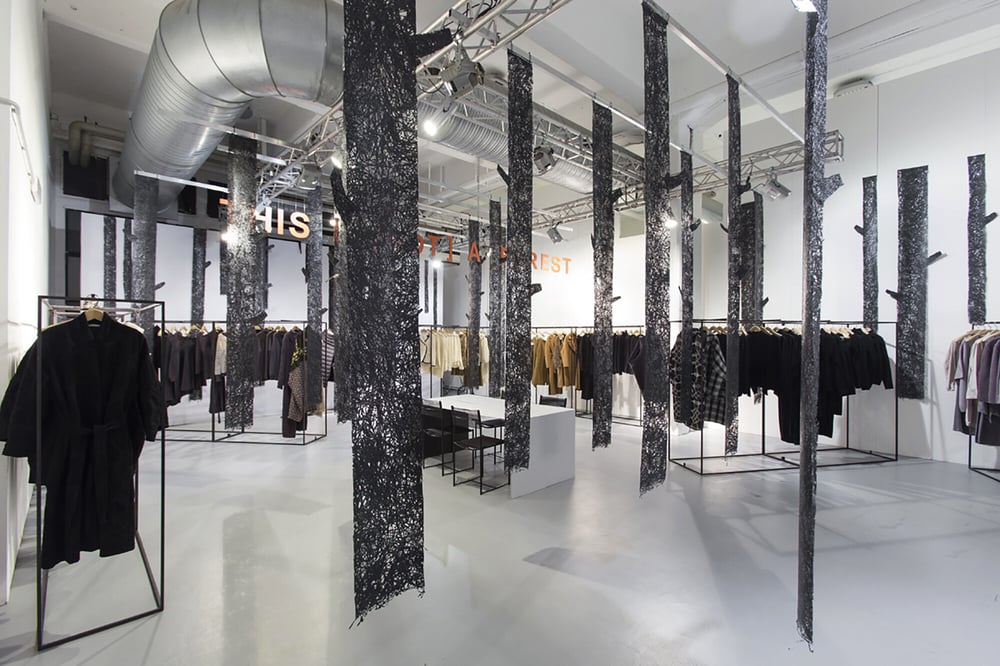Trade fairs and showrooms: what to expect this season?
Sales managers, agents, distributors... Over the last few days, many of them have been feeling the pressure to deliver. With June's major European fashion fairs just around the corner, everyone wants to present the best (and most importantly, the most complete) offer to physical and online multi-brands. As the ever-popular Pitti Uomo kicks off in Florence, FashionNetwork.com takes a look at the context of the latest campaign from the beginning of the year and gauges the sector's expectations for this summer. Last season, during which the Autumn-Winter 2023-2024 collections were presented, a number of factors left their mark on commercial relations.

Climate change
While climate change may not be the primary decision-making criterion for professionals, it has become an important one. Of course each market responds differently to climate change, but the French and Italian players questioned by FashionNetwork.com have noticed that the changes are also having an impact on buyers' behaviour. And not just in terms of choosing more responsible products... "For specialists in winter accessories, such as gloves and scarves, the season may have been more complex," said Sylvie Pourrat, director of the Première Classe show in Paris this winter.
This reluctance, particularly in France, was due primarily to high stock levels, but also to the uncertainty of being able to sell warm coats, or even cashmere jumpers, if the season was too mild. However, down jackets remained popular with retailers and buyers alike.
A number of brands have explained that they decided several seasons ago to halt the development of certain categories, as the production, transport and storage of heavy pieces uses a lot of resources. Statement pieces however, such as beautiful coats and accessories, are still of interest to stores with a mid-range positioning, which still buy a few pieces, especially to create looks for the window displays.
On the other hand, Maria Vittoria Bar Ziv, owner of DMVB Showroom in Milan, which sells contemporary and premium labels, notes that shoppers "have been buying coats, faux furs, jackets and knitwear again for the winter, including heavyweights." "When the product looks good and is attractively priced, they buy it", she assures us.
Could the unpredictable weather also be prompting buyers to change their summer purchasing decisions? Lightweight products adapted to long heatwaves could do well this season. As could products that can cope with more radical weather conditions. Elegant products incorporating technical textiles (anti-UV, anti-odour, breathable, waterproof etc.) could well score points... as long as they are also attractively priced.

The impact of inflation
Across Europe, players have noted the impact of the overall economic situation and inflation. Post-Covid, the warm seasons breathed new life into the sector, however the context is different in 2023.
According to Giacomo Piazza, co-founder of showroom 247, one of the biggest in Milan, "things have slowed down compared with the post-Covid period. Buyers are cautious and keeping a low profile, but they're not as scared as they were during Covid. We're in a moment of transition with no clear direction. The supply chain has changed. Given the pressure on transport and raw materials, some brands are relocating their production to Europe. The market has absorbed the increases up to a point. Now it's digesting them a little less."
The impact of higher production and transport costs has meant that the average price of items offered by most brands has risen. While some labels accepted these increases and decided to appeal to a more affluent clientele, others saw retailers, particularly those based in medium-sized towns in Europe, feel that their customers would no longer be able to buy their products.
"After the Covid period, we had a real boom in business. In an unstable environment, particularly in France where business was affected by the economic and social context, the spring-summer season was difficult. And the multi-brands came in with reduced budgets," says Thomas Dufour, the eponymous founder of the Paris showroom, who explains that he has seen a reduction in the volumes ordered. "Unfortunately, the brands that had produced some fine collections were not as well received as we had hoped".
Observers also note that in a premium market, some luxury brands still working with wholesalers have considerably increased their minimum orders. This dynamic has led to a tightening of the number of brands selected by retailers.
Against this backdrop, players need to be able to stand out from the crowd, either by adding an eco-responsible touch to their products, which is sought after by a growing number of retailers looking to attract new customers, or by securing delivery times, an increasingly key selection criterion for retailers.
For the spring-summer 2024 season, this economic tension could also be felt. The French market looks all the more fragile in this respect, as it is emerging from a long period marked by protests against the pension reform. This was an unfavourable context for consumer spending, and one that took its toll on the physical retail sector in many towns and cities at the beginning of the year.
But it seems that it wasn't just French retailers who were affected by the slowdown last season. In March, Mauro Calligari, owner of the Studio Zeta showrooms in Milan and Paris, told us: "Even though we made 30% more sales than last season, buyers' budgets remained stable because they are cautious after slow sales, especially in Italian boutiques."

The return of international buyers
Last season, buyers from the United States, the Middle East, Japan and South Korea returned to Europe's fashion capitals, much to the delight of labels with export potential.
Maria Vittoria Bar Ziv explains: "There has been a resurgence in international sales, with the return of the Russians, the Middle East and Asia, even if the Chinese are still rare. Many buyers are returning to physical stores, which is important to build distribution. Fashion is experienced in real life, and the best results are obtained when you see the product. With digital, we can only work with a consolidated customer base."
The same observation was made by Boris Provost of the Parisian trade show Tranoï, which takes place from June 22 to 25 at the Gaieté Lyrique. "Last season was our best since Covid," says the director. "We saw that the international buyers were back, particularly the Japanese and Koreans, and above all that the teams of buyers were getting bigger and bigger. They've made contact with the market again, and that's likely to materialise. And above all for this season, what everyone is waiting for is the return of the Chinese buyers."
If we are to believe a study by the Joor trade platform, released in the spring, Chinese buyers are eager to buy international labels again. The platform explained that it had observed 33% more orders from Chinese retailers at the beginning of 2023 than at the beginning of 2022, with the volume of transactions jumping by 61%. According to Joor, this dynamic has particularly benefited European players, with 58% more retailers placing orders with European labels.
So, with simplified travel options, Chinese professionals should be able to come and discover the Spring-Summer 2024 collections... and potentially give European brands the boost they need.
Copyright © 2023 FashionNetwork.com All rights reserved.




